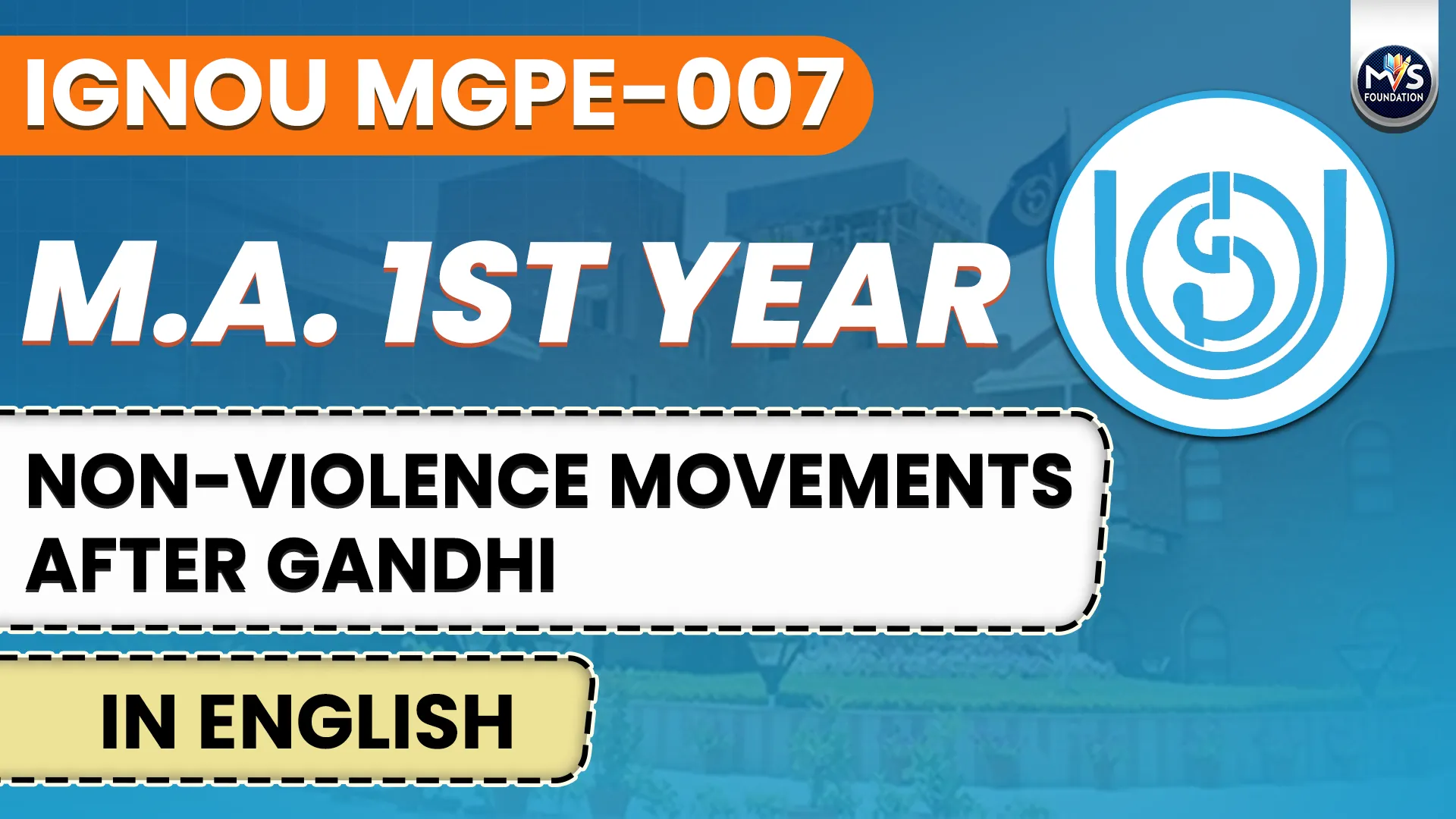
Get in Touch
We will get back to you within 24 hours.
Welcome to MVS Blog

Q1 - Explain the leadership and structure of peaceful movement in India.
OR
Discuss the leadership and organisational pattern in post-Gandhi non-violent movements.
Answer
Introduction
Leadership and structure of peaceful movement in India:
1. Gandhi's Leadership: Based on Ideas and Relationships - Mahatma Gandhi's leadership was not based merely on delivering speeches or displaying power, but on his ideas and the deep relationships he built with people. He understood the emotions and problems of common people. He did not treat leadership as a way to give orders, but as a means of service and dialogue. He personally shared in the pain and suffering of the people, and from there, the movement found its direction. Gandhi's leadership was such that followers were not just those who walked behind, but thoughtful and understanding companions.
2. The Structural Framework of Peaceful Movement in India - Gandhi ji established a clear and strong structural framework for the peaceful movement. It included two levels on one side were the common people who were emotionally connected to his image, and on the other side were the ashram residents who strengthened the movement through discipline and service. Gandhi maintained constant contact with the public through speeches, joumeys, and letters. The ashrams were the centers of planning, from where the strategies of the movement were prepared.
Leadership and organizational patterns in post-Gandhi nonviolent movements:
The Nature of Leadership: Continuity and Innovation in Gandhism
Organisational Pattern: Decentralisation, Ashrams and Global Connectivity
1. Gandhian Ashrams: Pillars of the Movement
Ashrams based on Gandhiji's ideals, such as Wardha and Madurai, served as centers for education, service, and experimentation for activists. Movements like Bhoodan, Peace Mission, and Shanti Sena were associated with these ashrams. These ashrams became a strong foundation not only for ideology but also for social service and organization.
2. Independent Peace Initiatives:
Engagement with New Social Sectors Women, students,
journalists, and environmental activists carried out peaceful protests on various social issues. They raised their voices against militarization, human rights violations, and flawed development. Even though there was a lack of unity among them, they certainly created new awareness and consciousness in society.
3. Global networking and training-based organizations -
Organizations like 'Peace Brigades
International operated training centers in India to teach peace and non-violence. These led to interactions and joint programs with people from around the world. At the same time, anti-nuclear movements inspired people to think about and question India's energy policy and military expenditures.
Conclusion
The non-violent movements that followed Gandhi not only kept his ideas alive but also gave them a new form and direction in the changing socio-political context. This tradition is still the basis of the moral consciousness of India's civil society.
0 Response